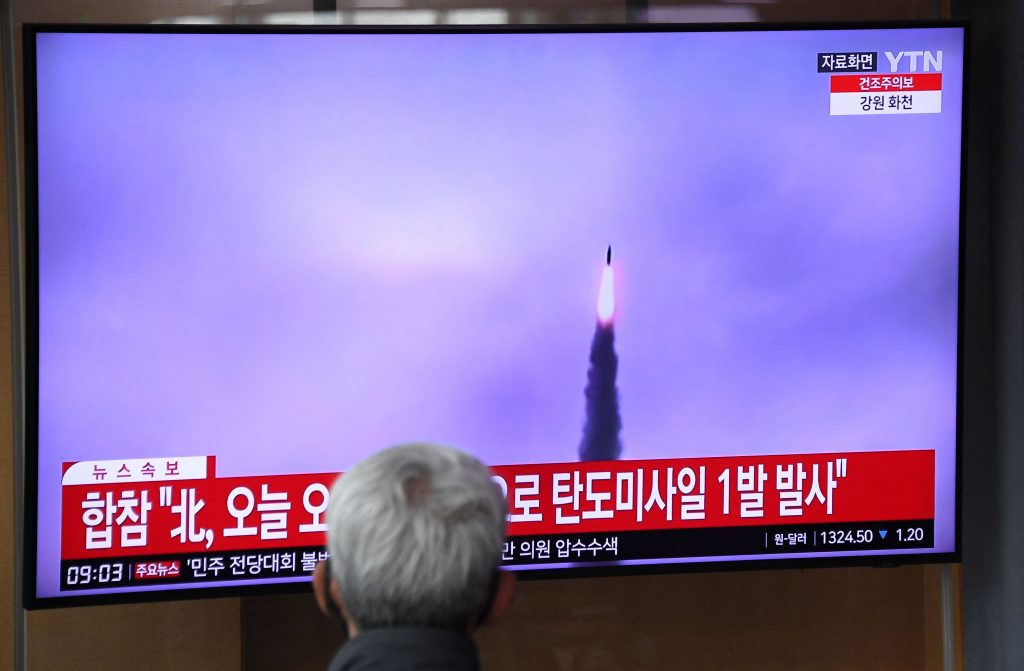
- ARAB NEWS
- 30 Jul 2025

North Korea fired a ballistic missile of intermediate range or longer on Thursday, South Korea and Japan said, triggering a scare in northern Japan where residents were told to take cover, though there turned out to be no danger.
Japanese authorities retracted the alert for Hokkaido island when they determined that the missile would not fall nearby.
The missile flew about 1,000 km (620 miles), South Korea’s military said, calling it a “grave provocation”. The apogee, or maximum altitude of the missile, has not been disclosed.
Prime Minister Fumio Kishida of Japan said his government would hold a National Security Council meeting in response to the launch.
The United States “strongly condemned North Korea for its test of a long-range ballistic missile,” the White House said in a statement.
Japan’s defence minister, Yasukazu Hamada, said the missile appeared to have been fired eastward at a high angle. He said it did not fall in Japanese territory, and that the defence ministry was analysing the launch for more details.
Japan’s coast guard said the projectile had fallen in the sea to the east of North Korea. Hamada said he could not confirm whether the missile flew over Japan’s exclusive economic zone.
There have been problems with the emergency warning system, J-Alert, before.
In October, an evacuation warning was issued when a missile overflew Japan but it came so late most people were not aware of it until the projectile had fallen into the Pacific.
A month later, a warning was erroneously issued saying a missile had overflown Japan.
On Thursday, a student told Japanese broadcaster NHK that the alert caused momentary alarm at a train station in Hokkaido.
“For a second in the train there was panic, but a station worker said to calm down, and people did,” the unidentified man told NHK.
The launch came days after North Korean leader Kim Jong Un called for strengthening war deterrence in a “more practical and offensive” manner to counter what North Korea called moves of aggression by the United States.
While condemning the latest in a string of North Korean missile tests, the United States renewed its offer to open talks.
“The door has not closed on diplomacy, but Pyongyang must immediately cease its destabilizing actions and instead choose diplomatic engagement,” U.S. National Security Council spokesperson Adrienne Watson said in a statement.
South Korean broadcaster YTN, citing a military official, said the test launch apparently involved a new weapons system displayed at recent North Korean military parades.
South Korea’s military was analysing the projectile’s trajectory and range, and was not ruling out that it could have been a solid-fuel missile.
North Korea has been working to build more solid-fuel missiles, which are easier to store and transport, and can be launched with almost no warning or preparation time.
The missile was fired at 7:23 a.m. (2223 GMT on Wednesday) from near Pyongyang, South Korea’s Joint Chiefs of Staff said.
The South Korean military said it was on high alert and coordinating closely with the United States.
North Korea has criticised recent joint military exercises between U.S. and South Korean forces as escalating tensions, stepping up its weapons tests in recent months.
Reuters